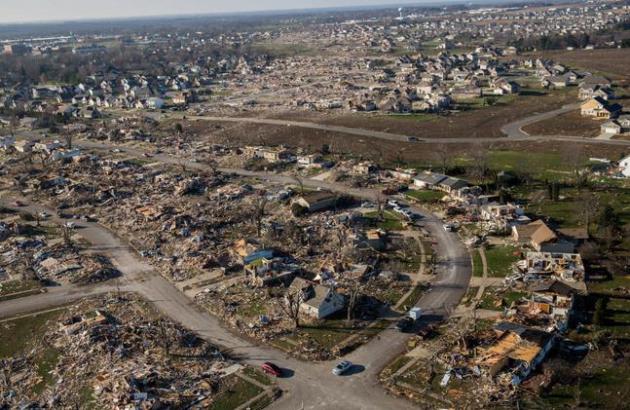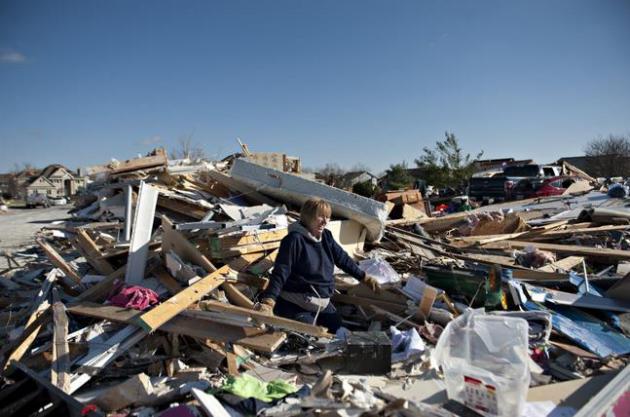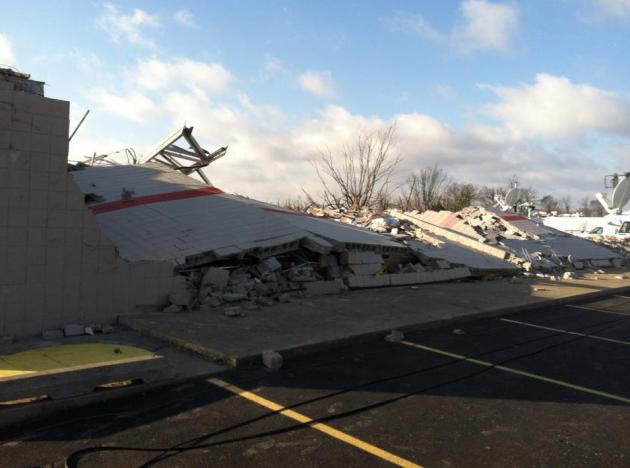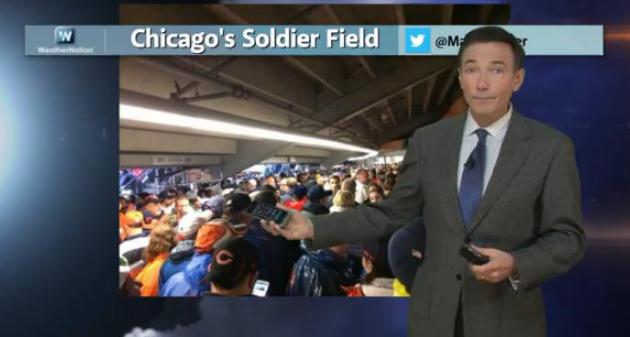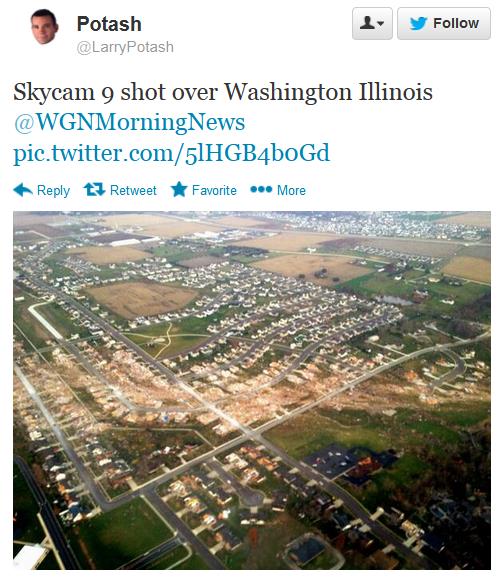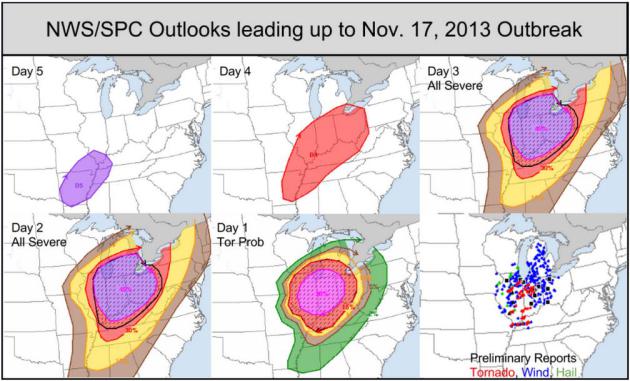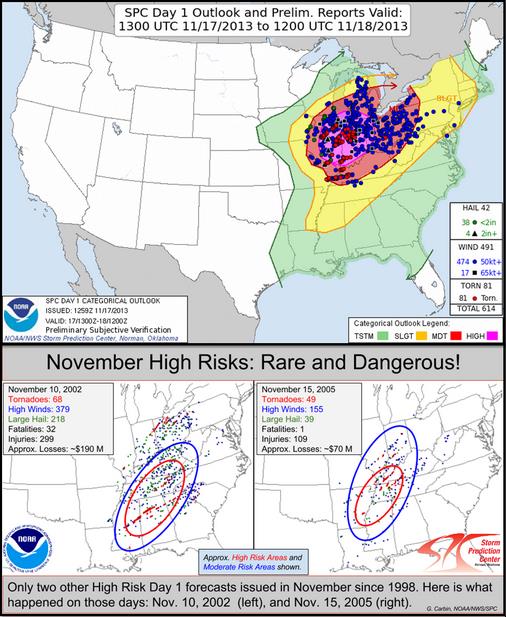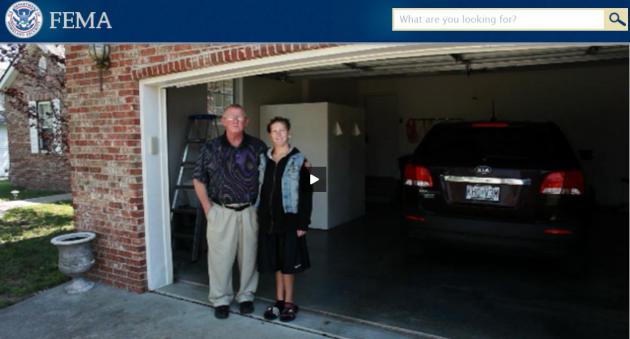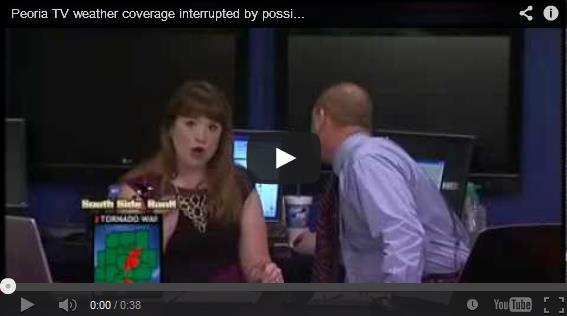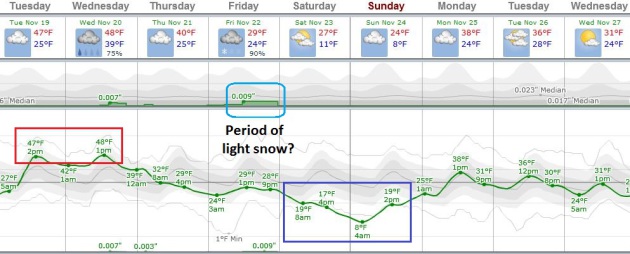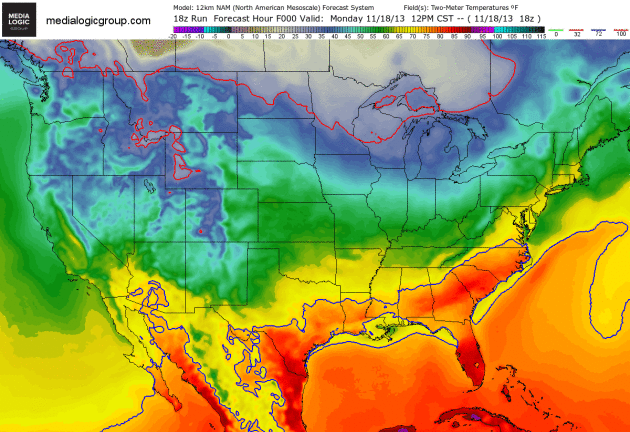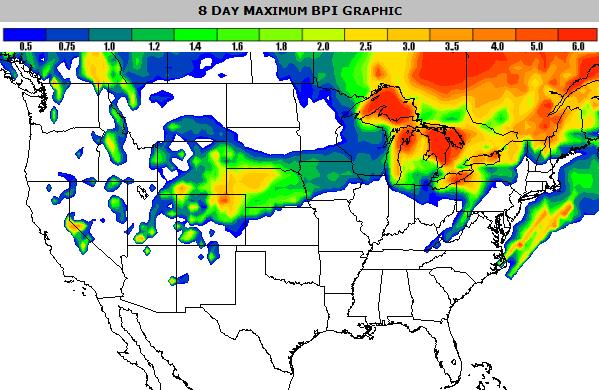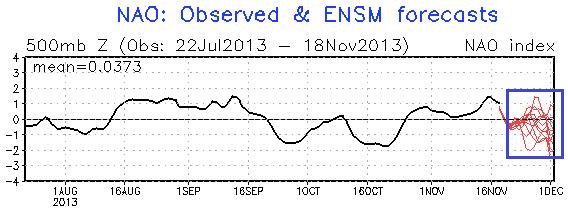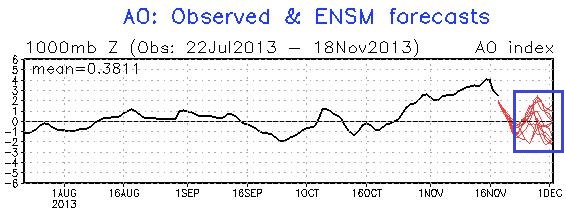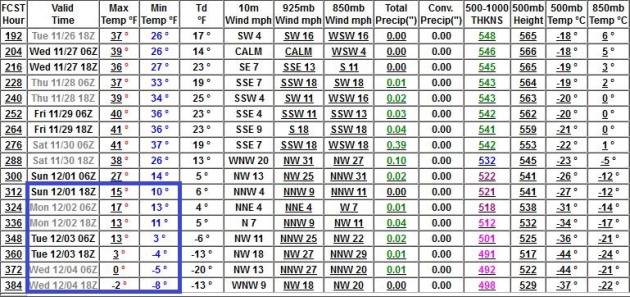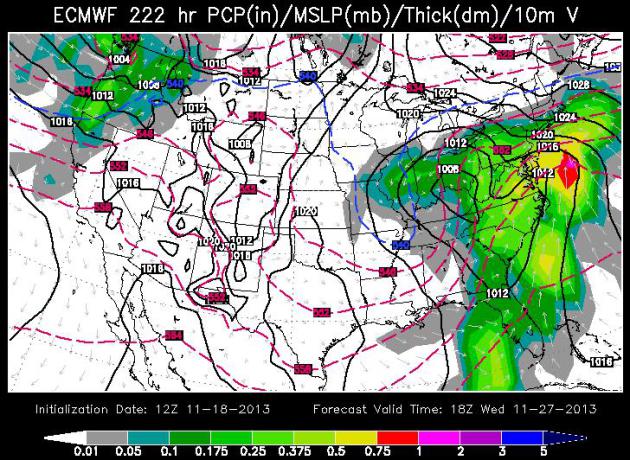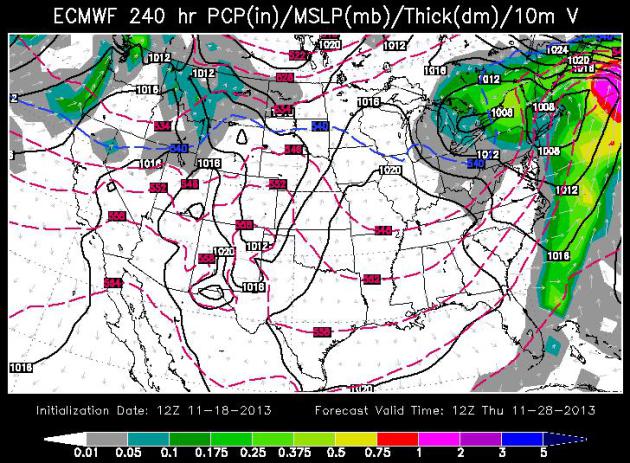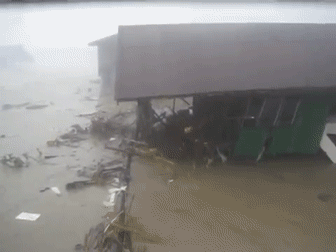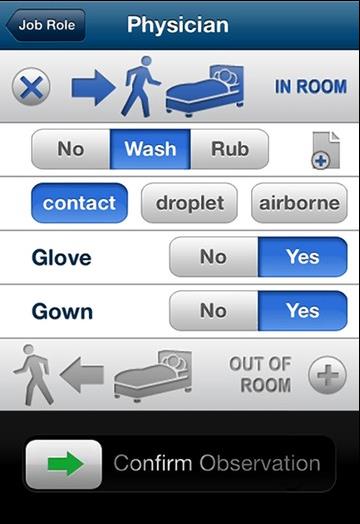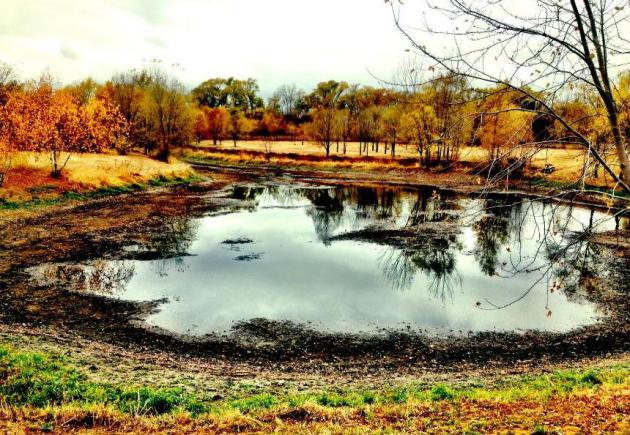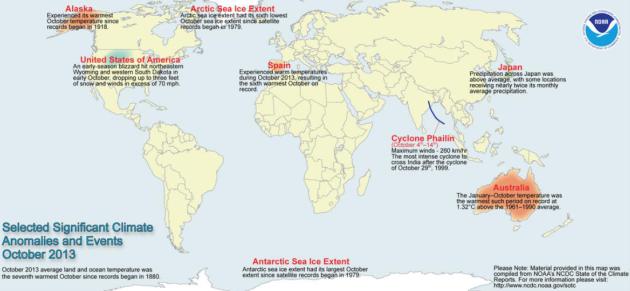Tornado Take-aways
Sunday's
surreal outbreak of tornadoes, some as strong as EF-4, may have been
the most violent seen so far north, coming so late in the season.
Tornadoes aren't exactly top-of-mind in Illinois in November.
Two
thoughts: you can retrofit any ground-floor closet into a "safe room"
for a few thousand dollars. If you don't have a basement this is a good
option, for the price of a family vacation to Disneyworld. The slow,
uncertain evacuation of Soldier Field during Sunday's Bears game was a
reminder that you can't depend on anyone else for your family's safety.
It all comes down to personal responsibility & being
"weather-aware".
My best advice: load up a few radar and
warning apps on your phone and be proactive. Head inside LONG before you
get the official order. Stay ahead of the severe weather curve.
The
pattern favors a series of glancing blows of arctic air for Minnesota,
with the biggest storms spinning up over the southern and eastern USA.
After peaking near 50F today temperatures cool off later this week. A
period of light snow may brush the state late Friday; by Saturday it'll
feel like January.
Thanksgiving weather? Highs in the 30s; no
mega-storms brewing into late next week. Winter mayhem may well be
postponed until December.
Photo credit above: "
Aerial pictures of the tornado damage at Washington, Illinois, near Peoria is seen on Monday, Nov. 18, 2013." (Zbigniew Bzdak/Chicago Tribune/MCT).
Governor Quinn Declares 7 Counties State Disaster Areas. Illinois was hit hardest by Sunday's tornado outbreak; here's an excerpt of a press release from
illinois.gov: "
Governor
Pat Quinn today declared seven counties state disaster areas after
severe storms generating tornadoes and high winds ripped across
Illinois. Hundreds of homes and businesses have been damaged or
destroyed, hundreds of thousands of people are without power, and
numerous roads throughout the state have been closed by fallen trees and
downed power lines. At least six people are reported dead and dozens
more injured. Later today, Governor Quinn will inspect damage on the
ground in some of Illinois' hardest hit communities: Washington,
Diamond, Gifford, Brookport and New Minden. Counties included in the
Governor’s declaration are: Champaign, Grundy, LaSalle, Massac,
Tazewell, Washington and Woodford counties...
Photo credit: "
Linda
Gonia sifts through debris left from her home after a tornado that
swept through Washington, Ill, Nov. 18, 2013. Severe storms moved
through the Midwest on Sunday, leveling towns, killing at least six
people in Illinois and injuring dozens more, and causing thousands of
power failures across the region." (Daniel Acker/The New York Times)
Hardest Hit Communities:
Washington, IL - 1 death, extreme damage (outside of Peoria)
Washington County, IL - 2 additional deaths near New Minden (southeast of St. Louis)
Brookport, IL - 2 trailer parks destroyed, at least 2 deaths
Massac County - 1 death, just outside Brookport
*these deaths confirmed by multiple news sources, see NY Times below*
6 deaths total so far (all in Illinois), 12 states reporting damage
150-200 reports of injuries in Illinois alone
Pekin, IL - one of the first large tornadoes of the day
Kokomo, IN - additional extensive damage
NWS Preliminary tornado ratings:
EF-4 : New Minden, IL
EF-4 : Washington, IL
EF-2 : Coal City, IL
Total Devastation.
Ben Fiedler sent in this photo of what's left of an auto parts store in
Washington, Illinois, one of the towns hardest hit by Sunday's historic
tornado outbreak.
 Filtered Tornado Count: 76
Filtered Tornado Count: 76.
The raw number was 91 as of late Monday night. But after NOAA analyzed
each tornado sighting it determined that some of these reports were the
same tornado, seen from different vantage points. It may be the 3rd or
4th biggest November outbreak in U.S. history - possibly the most severe
so far north, so late in the season. Map above:
NOAA SPC.
Sunday's Historic Tornado Outbreak - Ways To Lower Overall Risk.
Sunday's swarm of tornadoes was well predicted. There were no big
surprises here - even though there was no way to know, in advance, which
towns would be hit the hardest. For me it reinforced a few ideas: don't
trust officials to protect you or your family - take steps to make sure
you're in the weather loop wherever you go, 24/7, including Doppler
radar and GPS-centric warnings. That, and if you don't have a basement
consider a safe room. For the price of a family vacation you can
reinforce a closet and lower the risk of becoming a tornado statistic.
More details in today's edition of
Climate Matters.
SPC Nailed Sunday's Tornado Outbreak.
As early as 4 days before the event SPC was highlighting the Ohio
Valley and talking about a major outbreak. On Saturday the risk was
elevated to "moderate", then "high" early Sunday morning, meaning it was
going to be a very active and violent day. You can see where the
tornadoes actually touched down (red dots). That's about as good a
severe weather forecast as you'll ever see.
Third November SPC "High Risk" Since 1998.
This may have been the most violent tornado outbreak ever recorded so
far north (central Illinois into central Indiana). Source: NOAA SPC.
Why Every Home Should Have A Basement (Or Safe Room). In light of more tornado-related tragedy I wanted to post a video from
FEMA
highlighting the merits of a safe room, which can be installed in
nearly any home or apartment, costing a few thousand dollars to
reinforce a closet: "
In May 2008, Tom Cook and his teenage daughter
Ryanne survived a catastrophic tornado in Racine, MO, that leveled their
home. But Tom's wife of 19 years and Ryanne's mother did not survive.
Following this tragic event, Tom vowed to be prepared for disasters in
the future. Tom and Ryanne moved to nearby Joplin, Missouri, to
rebuild--this time with a safe room in their garage. This decision
proved fortuitous when an EF-5 tornado touched down just three years
later on May 22, 2011. The storm leveled their home; however, Tom and
Ryanne were safe and unharmed. "It was blown away completely - again,"
Tom said. "The only thing standing was that storm room."
- Location: Joplin, MO.
Peoria Anchors Scramble For Shelter When Tornadic Storm Hits Station. Here's the video clip and an explanation from
TVSpy: "
A tornado tearing through East Peoria pushed two anchors for the local NBC station WEEK off the air after the twister hit part of the station’s property yesterday morning. Meteorologists Chuck Collins and Sandy Gallant
were giving viewers on-air updates about the approaching tornado when
they said they heard something. They scrambled for shelter at 11:00
a.m., leaving the anchor desk while the station went to a break. Seven
minutes later, they were back on. “OK, guys. We just had a very scary
situation to report. WEEK’s TV studios was hit by…it appears to be a
tornado,” said Gallant. “We were on the air just a few minutes ago. You
may have seen us go off the air rather quickly and that is because,
obviously, we could hear the sound of a train right outside of our
station...”
Indianapolis TV Station Trolled With Doctored Photo Of Tornado, A UFO, and Bigfoot. The joys and perils of the Internet/Photoshop Age; here's a cautionary tale from
TVSpy: "
WTHR
appears to have been trolled during its coverage of the storms that
rumbled across the state when an image of a fake tornado that included a
UFO and bigfoot was uploaded to its viewer photo iwitness site. Jim Romenesko reported that Indianapolis Star reporter Eric Weddle found the mistake and tweeted about it..."
Pacific Air Next 36 Hours - Canadian Breeze Returns By Late Week.
ECMWF guidance shows highs within a few degrees of 50F today and
Wednesday, then a gradual temperature tumble by late week. Highs may not
climb out of the mid 20s Saturday, moderating again next week. A storm
spinning up along the leading edge of this glancing blow of arctic air
may squeeze out a little light snow late Friday. Graph: Weatherspark.
Cold Air Building.
Although not the "Mother Lode", not yet - cold air is forecast to push
south of the border the latter half of this week. The dark red line
marks the predicted 32F isotherm, the green line shows temperatures
below 0F. 84 hour NAM model data courtesy of NOAA and Ham Weather.
Serious Late Week Lake Effect.
Our modeling guru has created a new product called the BPI, or Blizzard
Potential Index, which calculates the probability of low visibility and
heavy snow. Although not a true blizzard, lake effect snows may produce
local white-out conditions near the Great Lakes later this week into
the weekend, another region of snow from north of Denver into Nebraska.
Map: Ham Weather.
Negative Phase Of AO and NAO By Early December?
A negative phase usually correlates with a jet stream configuration
that favors much colder conditions east of the Rockies. I wouldn't be at
all surprised to see a numbing start to December, especially Upper
Midwest and Great Lakes to New England. Graphs: NOAA.
Implications Of A Negative Arctic Oscillation.
The GFS seems to confirm a turn to much colder weather after December 2
or so, maybe a few days of single-digit highs and subzero nights the
first week of December? We'll see.
Pre-Thanksgiving Travel Headaches?
Although I don't see any major snowstorms next week, ECMWF guidance
shows a significant coastal storm next week for the eastern USA, a cold,
windswept rain possible. This may cause some travel delays, by land and
air. European solution valid midday Wednesday, via WSI.
Early Look At Thanksgiving Weather Map.
Rain is forecast to taper over New England on Thanksgiving, some sun
due to downslope (sinking air in the lee of the Appalachians) from D.C.
to Charlotte. Dry weather is predicted for much of the southern and
central USA on Thanksgiving Day, snow for the northern Rockies and a
cold rain from Seattle to Portland. Map above valid 12z Thanksgiving
morning, courtesy of WSI.
Incredible Footage Of Super Typhoon Haiyan's Storm Surge.
I've never (ever) seen the water come up this rapidly - I can now see
how many observers compared Haiyan's storm surge with a tsunami. The
YouTube footage is
here.
October Weather Highlights.
From record blizzards in the Dakotas to historic flooding in the
Austin, Texas area, to an EF-4 tornado near Wayne, Nebraska - October
had something for everyone. Map:
NOAA NCDC.
Starbucks Puts A Coffee Shop On Rails. Just when you thought they couldn't jam in another Starbucks on your block - let's put them on rails! Here's a clip from
Gizmag: "
Apparently
not content with putting a coffee shop on every second street corner,
Starbucks has teamed with Swiss Federal Railways (SBB) to expand into
rail travel with the unveiling of the first railway carriage converted
into a Starbucks. The double-decker car uses a design that combines
design elements based on coffee with Swiss detailing in what Starbucks
calls the smallest bar it has ever designed..."
Health-Care Apps That Doctors Use. I found this
Wall Street Journal article
interesting; here's an excerpt: "...Mobile apps for smartphones and
tablets are changing the way doctors and patients approach health care.
Many are designed for the doctors themselves, ranging from handy
databases about drugs and diseases to sophisticated monitors that read a
person's blood pressure, glucose levels or asthma symptoms. Others are
for the patients - at their doctor's recommendation - to gather
diagnostic data, for example, or simply to help coordinate care, giving
patients an easy way to keep track of their conditions and
treatments..." (screen shot above: iScrub and Wall Street Journal).
A Batmobile In Your Future? It would be fun to cruise down I-35 in one of these (might make it easier to merge too). Details via
gizmag.com: "
Historics
auction house in Surrey, UK, is listing a fully road-legal Batmobile
for sale. It’s not an original – the car is a replica of the vehicle
used by Michael Keaton in Tim Burton’s 1989 and 1992 movies – but
Historics lists the piece as an "extremely well conceived tribute." "
BLACK,
low mileage, excellent condition, bespoke chassis, automatic
transmission, fuel injected Jaguar 3.2 liter engine, remote ignition,
hydraulic suspension, smoke release mechanism, flame thrower.
US$145,000."
Climate Stories...
What Farmers Think About Climate Change In One Great Quote. Here's a clip from a story at
Business Insider: "...
Here is what Climate Corporation founder Dave Friedberg said about how most farmers view climate change (emphasis ours):
"You
don't need to talk about climate change per se ... Statistically, you
are looking at a series of numbers. If it were a roulette wheel, you
could say, 'It's coming up black more and more frequently.' Can I
attribute that to black being overweighted by the croupier? Or to the
pit boss, or the machine being broken? It doesn't matter.
Some people will argue that ice ages have waxed and waned for tens of
millennia and that this is part of a natural cycle. That doesn't change
the fact that black is coming up more frequently and you will
get less out of an acre of corn than you used to. The price for that
land simply cannot be justified by the income it can generate."
In
other words, it doesn't matter what's causing it, but something's
definitely not right, and investing in protection from that uncertainty
now seems a must..."
Global Climate Events In October. Data courtesy of
NOAA NCDC.
All Over The World, Hurricane Records Keep Breaking. A symptom of warmer seas or a statistical fluke? Chris Mooney takes a look at
Mother Jones; here's an excerpt: "...
But
here's the thing: Haiyan isn't the globe's only record-breaking
hurricane in recent years. Even as scientists continue to study and
debate whether global warming is making hurricanes worse, hurricanes
have continued to set new intensity records. Indeed, a Climate Desk
analysis of official hurricane records
finds that many of the globe's hurricane basins—including the Atlantic,
the Northwest Pacific, the North Indian, the South Indian, and the
South Pacific—have witnessed (or, in the case of Haiyan and the
Northwest Pacific, arguably witnessed) some type of new hurricane
intensity record since the year 2000. What's more, a few regions that
aren't usually considered major hurricane basis have also seen mammoth
storms of late..." (Image: NOAA).
Haiyan, Sandy And Climate Change. Jeff Nesbit has the story at
U.S. News; here's the introduction: "
Is
climate change responsible for the devastation caused by Super Typhoon
Haiyan – the strongest tropical cyclone to make landfall in recorded
history? Was it responsible for Superstorm Sandy, which caused billions
of dollars of damage to New York City and New Jersey? More broadly, is
climate change starting to have an impact today on such extreme weather
events? The answer to those questions is a complicated one, but it
starts with the word "yes". Scientists have spent years researching
climate change's role in specific, extreme events such as Haiyan and
Sandy. But what climate scientists know today, with a high degree of
certainty, is that all extreme weather events are now occurring in a
world where the oceans are warmer, sea levels are higher and
temperatures are rising. So the odds of more intense, devastating storms
like Haiyan and Sandy are increasing every year..."
Photo credit above: "
A resident bikes past the devastation in Tacloban, central Philippines."
Gaps In Data On Arctic Temperatures Account For The "Pause" In Global Warming. Here's more information on the recent discovery, courtesy of
The Independent: "...
That
much-vaunted “pause” in global warming can be largely explained by a
failure to record an unprecedented rise in Arctic temperatures over the
past 15 years, a study has found. Two independent scientists have found
that global temperatures over the past decade have almost certainly
risen two-and-half times faster than Met Office scientists had
conservatively assumed when they estimated Arctic warming because of a
lack of surface temperature records in the remote region. Moreover, when
the latest estimates of Arctic temperatures are included in the global
temperatures, the so-called “pause” in global warming all but disappears
and temperatures over the past 15 or so years continue to increase as
they have done since the 1980s, the scientists said..."
Surviving Climate Change: Is A Green Energy Revolution On The Global Agenda? Here's a clip from a story at
Huffington Post
that made me do a double-take. Will it really come to this? I hope we
come to our senses long before there are protests on the streets, but
some days I wonder: "...
Nobody can say that a green energy
revolution is a sure thing, but who can deny that energy-oriented
environmental protests in the U.S. and elsewhere have the potential to
expand into something far greater? Like China, the United States will
experience genuine damage from climate change and its unwavering
commitment to fossil fuels in the years ahead. Americans are not, for
the most part, passive people. Expect them, like the Chinese, to
respond to these perils with increased ire and a determination to alter
government policy. So don’t be surprised if that green energy revolution
erupts in your neighborhood as part of humanity’s response to the
greatest danger we’ve ever faced. If governments won’t take the lead on
an imperiled planet, someone will..."
Global Warming And Business Reporting - Can Business News Organizations Achieve Less Than Zero? No,
wait, there's a scientific disinformation campaign underway? Could it
be because some (specific) businesses feel that their business models
and future earnings are at risk? Here's an excerpt from
The Guardian: "
Some
of the most popular business news outlets are complete failures when it
comes to climate reporting. If they get basic climate science this
wrong, how can they be trusted on any other topic? Recently, news
outlets such as Forbes, the Wall Street Journal
and CNBC have been in misinformation overdrive. It's not like it's
difficult to get real scientists to speak to journalists. In spite of
this, these news organizations have their so-called experts wax
ineloquently on climate change, all the while displaying enormous ignorance of the actual science..."
Acid Oceans Could Cost The World Billions Of Dollars. The forecast calls for more jellyfish. Here's an excerpt from a story at
Quartz: "
Ocean
scientists fear that climate change is dramatically shifting the
chemical balance of the ocean in ways that will kill fish, molluscs and
coral, harming 540 million people who depend on fisheries for their
livelihoods—and anyone who likes a cheap oysters. Oceanographers gathered for a summit in Monterey, California, last month, producing a new report warning policymakers of the need to act. The
world’s oceans are basically a giant carbon sink, absorbing about a
quarter of carbon dioxide emissions. Since the industrial revolution,
the ocean has become increasingly acidic due to increased carbon
emissions—and at a faster pace than ever before—but that saturation is
making the ocean less effective at taking carbon out of the air.."
Photo credit above: "
Fishing communities aren't looking forward to a pH drop." Reuters/Lou Dematteis.
Top U.N. Official Warns Of Coal Risks. Here's the introduction to a
New York Times article: "
Most
of the world’s coal needs to stay in the ground if greenhouse gas
emissions are to be held in check, the United Nations’ top climate
change official said Monday in a speech
to coal industry executives here in Poland, one of the most
coal-dependent nations on Earth. Christiana Figueres, executive
secretary of the United National Framework Convention on Climate Change,
told industry officials here that they were putting the global climate
and their shareholders at risk by failing to support the search for
alternative methods of producing energy..."
